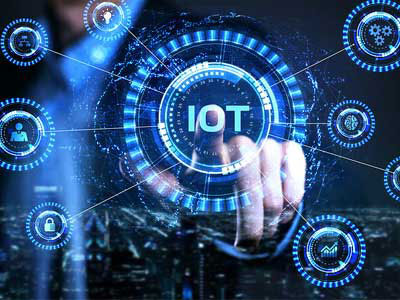Key Takeaway
The main goal of IoT (Internet of Things) is to connect devices and objects to the internet. This allows them to collect and share data. By doing this, devices can be remotely monitored and controlled. For example, smart home devices like thermostats and lights can be managed through your smartphone. IoT aims to make our lives easier by automating tasks and providing real-time information. This connectivity improves efficiency and convenience in many areas, from home automation to industrial applications.
Understanding IoT Objectives
The primary goal of IoT is to connect devices and systems to gather and exchange data, leading to smarter operations. By embedding sensors and communication technology into everyday objects, IoT enables real-time data collection and analysis. This interconnected ecosystem allows for better monitoring, control, and automation of processes, ultimately improving efficiency and productivity. Think of IoT as the bridge between the physical and digital worlds, creating a seamless flow of information that empowers informed decision-making and proactive maintenance.

Enhancing Efficiency Through IoT
One of the significant advantages of IoT is its ability to enhance efficiency. In industrial applications, IoT devices can monitor machinery performance, predict maintenance needs, and reduce downtime. By collecting and analyzing data from various sources, IoT helps identify bottlenecks and optimize workflows. For instance, in manufacturing, IoT sensors can track equipment usage, ensuring optimal operation and preventing costly breakdowns. This proactive approach not only saves time and resources but also improves overall productivity and competitiveness in the market.
Imagine you’re in a factory, and you have sensors on all critical machinery. These sensors continuously monitor temperature, vibration, and operational status. When a machine shows signs of wear or potential failure, the system alerts the maintenance team, who can address the issue before it leads to a breakdown. This minimizes unplanned downtime and extends the equipment’s life. Additionally, IoT systems can automate routine tasks, freeing up human resources for more strategic activities. Overall, IoT’s real-time monitoring and predictive maintenance capabilities significantly boost operational efficiency and ensure smoother production processes.
Improving Decision-Making with IoT Data
Data-driven decision-making is another critical goal of IoT. With the vast amount of data generated by connected devices, industries can gain valuable insights into their operations. IoT platforms collect and analyze this data, providing actionable information that supports strategic planning and operational improvements. For example, in supply chain management, IoT data can track inventory levels in real-time, enabling better stock management and reducing waste. By leveraging IoT data, businesses can make informed decisions, enhance customer satisfaction, and drive growth.
Think about a warehouse using IoT sensors to monitor inventory. These sensors update stock levels in real-time, allowing managers to see which items are running low and need restocking. This precise tracking helps avoid overstocking or stockouts, ensuring the right products are always available for customers. Moreover, IoT data can reveal patterns and trends, such as peak demand times, helping businesses plan better. By analyzing this data, companies can optimize their supply chains, reduce costs, and improve delivery times. This level of insight is invaluable for making strategic decisions that enhance efficiency and profitability.
IoT for Enhanced Connectivity and Communication
IoT fosters enhanced connectivity and communication among devices, systems, and people. In industrial applications, this seamless integration leads to improved coordination and collaboration. Imagine a smart factory where machines automatically adjust their operations based on real-time data, ensuring optimal performance and minimal downtime. This connectivity allows IoT-enabled devices to communicate with each other, exchange data, and trigger actions without human intervention. By ensuring that all parts of the system work harmoniously, IoT reduces errors and increases efficiency. This interconnectedness is crucial for maintaining high productivity and quality standards in modern industrial environments.
The ability of IoT to integrate various components enhances overall system reliability and responsiveness. For example, in a manufacturing plant, sensors can monitor equipment conditions and predict maintenance needs, preventing unexpected breakdowns. This proactive approach not only saves time but also reduces operational costs. Furthermore, IoT-driven connectivity supports better decision-making by providing comprehensive insights into system performance. Engineers and operators can access real-time data from anywhere, enabling swift responses to any issues that arise. This level of connectivity transforms industrial operations, making them more agile, efficient, and resilient.
IoT in Driving Innovation Across Industries
Innovation is at the heart of IoT technology. By providing new ways to collect and analyze data, IoT drives innovation across various industries. In healthcare, IoT devices monitor patient health, enabling remote care and early intervention. This technology can save lives by detecting health issues before they become critical. In agriculture, IoT sensors optimize irrigation, leading to better crop yields and resource conservation. Farmers can precisely control water usage, reducing waste and improving sustainability. The potential for innovation is limitless, as IoT opens up new avenues for improving products, services, and processes.
Embracing IoT technology means staying ahead in the competitive landscape and continually finding ways to enhance and innovate. For businesses, this means leveraging data to make informed decisions, enhance customer satisfaction, and drive growth. In the industrial sector, IoT can lead to the development of smarter machinery, predictive maintenance solutions, and more efficient supply chains. The integration of IoT with AI and machine learning further amplifies its innovative potential, enabling predictive analytics and autonomous decision-making. This transformative power of IoT drives continuous improvement and positions industries to adapt swiftly to market changes and technological advancements.
Conclusion
The main goal of IoT is to create a more connected, efficient, and innovative world. By understanding its objectives, industries can harness the power of IoT to drive efficiency, improve decision-making, enhance connectivity, and foster innovation. As an engineer, embracing IoT technology means being part of a transformative movement that shapes the future of industry. Whether it’s through optimizing operations, making data-driven decisions, or driving innovation, IoT offers endless possibilities for growth and improvement. By leveraging IoT, industries can achieve their goals and stay at the forefront of technological advancements.
